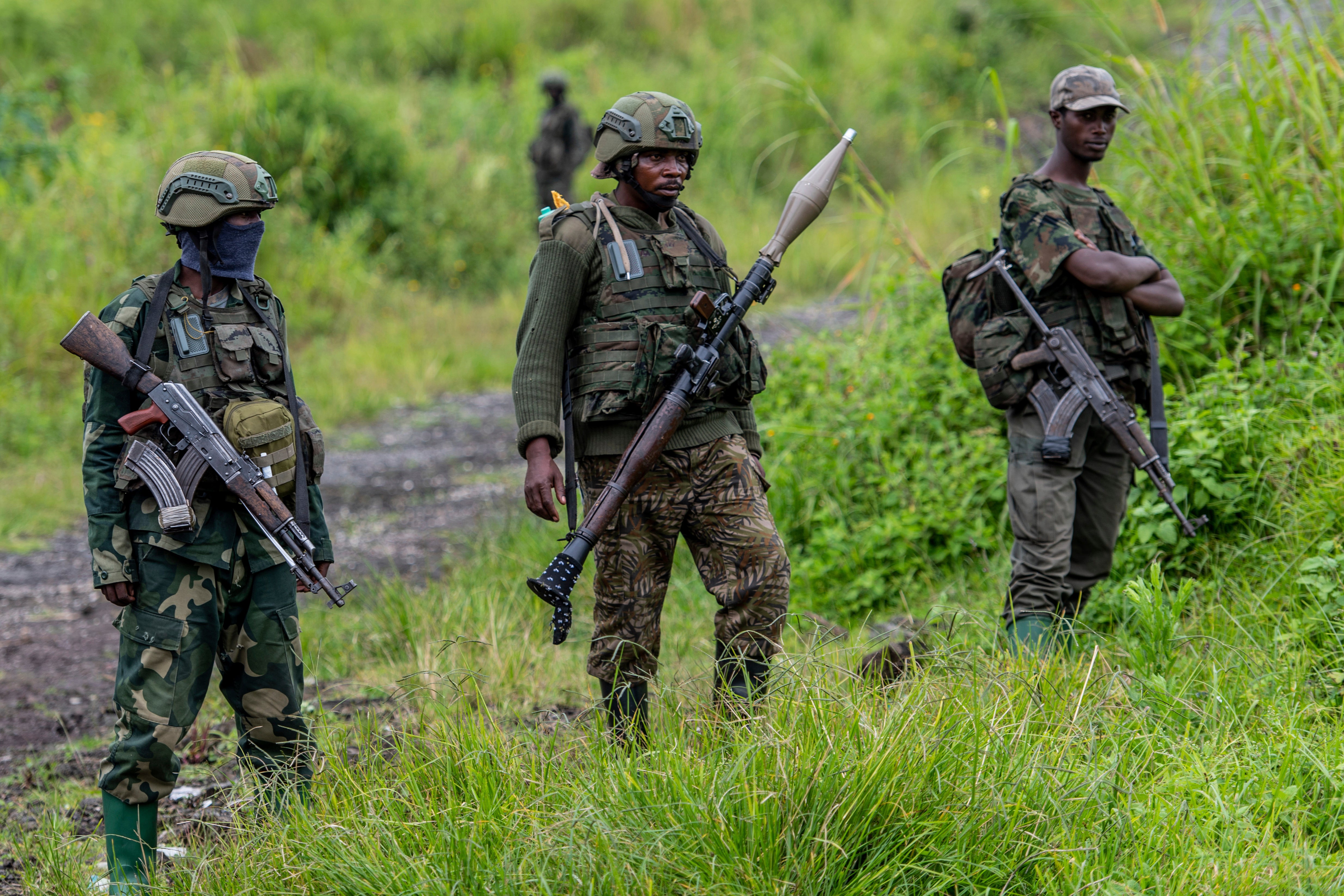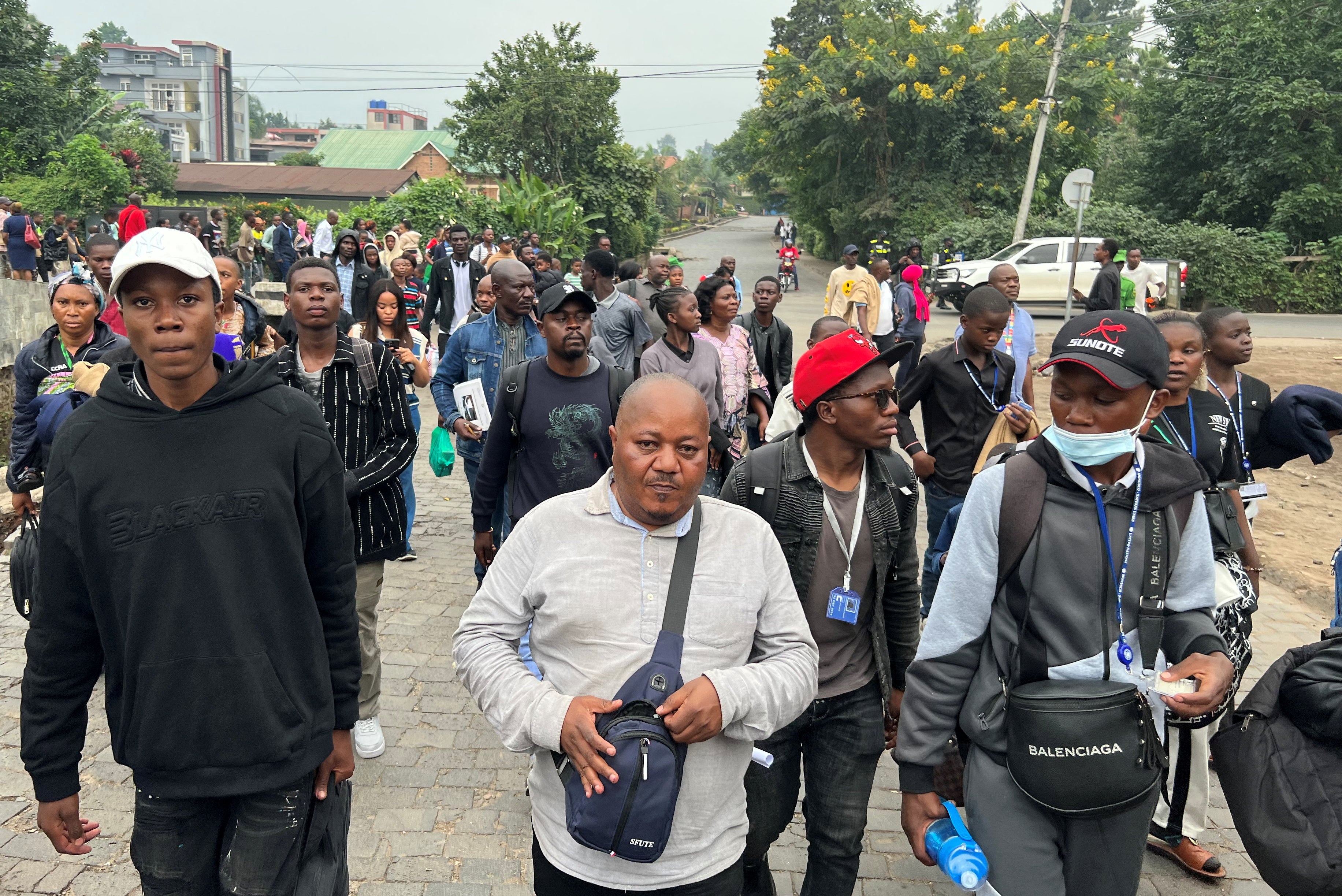What is happening in east Congo? And who are the M23 rebels?
A long-running conflict has created one of the world’s largest humanitarian crises

Your support helps us to tell the story
From reproductive rights to climate change to Big Tech, The Independent is on the ground when the story is developing. Whether it's investigating the financials of Elon Musk's pro-Trump PAC or producing our latest documentary, 'The A Word', which shines a light on the American women fighting for reproductive rights, we know how important it is to parse out the facts from the messaging.
At such a critical moment in US history, we need reporters on the ground. Your donation allows us to keep sending journalists to speak to both sides of the story.
The Independent is trusted by Americans across the entire political spectrum. And unlike many other quality news outlets, we choose not to lock Americans out of our reporting and analysis with paywalls. We believe quality journalism should be available to everyone, paid for by those who can afford it.
Your support makes all the difference.Congo has severed diplomatic ties with Rwanda as fighting between Rwanda-backed rebels, the M23 group, and Government forces rage around the key eastern city of Goma,
In recent weeks, the rebel group has made significant territorial gains along the border with Rwanda, encircling Goma, the provincial capital of around two million people and a regional hub for security and humanitarian efforts.
Congo, the US and UN experts accuse Rwanda of backing M23, which is mainly made up of ethnic Tutsis who broke away from the Congolese army more than a decade ago.
It's one of about 100 armed groups that have been vying for a foothold in the mineral-rich region, where a long-running conflict has created one of the world’s largest humanitarian crises. The region already suffered two devastating wars between 1996 and 2003.
Here is some background on the conflict:

Who are M23?
M23, which refers to the March 23, 2009, accord that ended a previous Tutsi-led revolt in eastern Congo, is the latest group of ethnic Tutsi-led insurgents to take up arms against Congolese forces. It launched the current rebellion in 2022.
The group has accused the Government of Congo of not living up to the peace deal and fully integrating Congolese Tutsis into the army and administration. It also vows to defend Tutsi interests, particularly against ethnic Hutu militias such as the Democratic Forces for the Liberation of Rwanda (FDLR), founded by Hutus who fled Rwanda after participating in the 1994 genocide of close to 1 million Tutsis and moderate Hutus.
Since the start of 2025, the rebels have seized new territory and reached Goma, the capital of North Kivu province, prompting hundreds of thousands more people to flee their homes.
For more than a year, M23 has controlled Congo's coltan-mining region of Rubaya, generating an estimated $800,000 per month through a production tax, according to the U.N. Coltan is used in the production of smartphones and other equipment.
The group's spread into new territories in recent weeks gives it scope to acquire more mining revenue, analysts say.
Why is Rwanda involved?
The government of Congo, U.N. officials and Western powers including the United States have accused Congo's neighbour Rwanda of fuelling the conflict by deploying thousands of its own troops and heavy weapons on Congolese soil in support of M23.
The accusations are based on a 2022 report by a U.N. Group of Experts that said it had "solid evidence" that Rwandan troops had been fighting alongside the M23 rebels.
Rwanda, which denies backing the rebels, says it has taken what it calls defensive measures and accuses Congo of fighting alongside the FDLR, which has attacked Tutsis in both countries.
Rwanda has a long history of military intervention inside Congo. It and Uganda invaded in 1996 and 1998, claiming they were defending themselves against local militia groups.
U.N. peacekeepers are supporting the Congolese army's efforts to curb the M23 as part of the MONUSCO mission's years-long mandate to counter the many rebel groups active in eastern Congo.
An agreed withdrawal of the mission from Congo has been paused due to the deteriorating security situation. As of December, there were nearly 11,000 peacekeepers on the ground, mostly in the east.
The 16-member Southern African Development Community (SADC) also extended its military mission in Congo late last year.
Both forces have suffered losses since the start of 2025.
Join our commenting forum
Join thought-provoking conversations, follow other Independent readers and see their replies
Comments